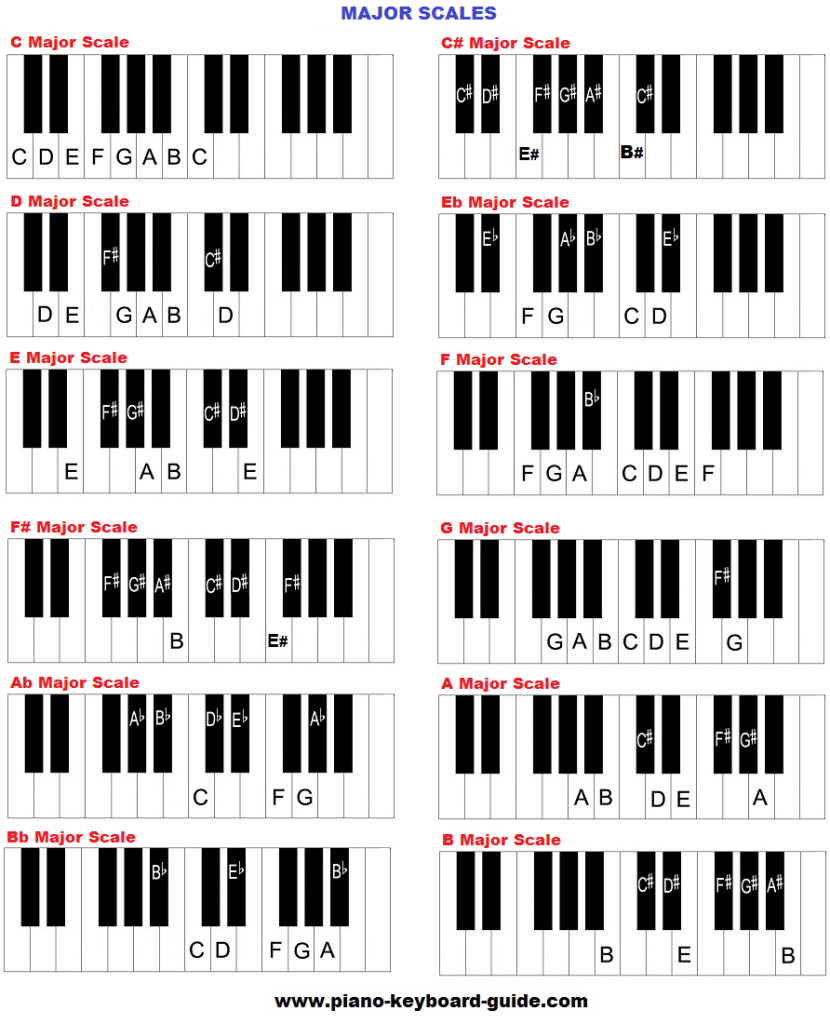

If you remember the major keys, you can easily find the relative minor keys by going down a minor third from the root note of the major key. The circle of fifths is a helpful visual aid tool to remember the keys and their key signatures. Keys with up to three sharps or flats are the most common.

All other keys have between one and seven sharps or flats. The relative keys C major and A minor have no sharps or flats in the key signature. The key signatures determine the notes of the music piece, and thus either a major key or its relative minor key.īelow is an overview of the keys and key signatures. In music notation the keys are indicated with a key signature at the beginning of the staff immediately after the clef. Minor keys differ from major keys in that the third, sixth, and seventh degrees in the key are lowered by a half step. NI Maschine, Ableton Push and Novation Circuit, to name three, all feature scale modes that lay only the notes in a specified key out across a grid of pads.Parallel keys have different notes. Many hardware controllers and sequencers allow you to do similar things.

Add to this the fact that you can also drag notes back to before the first beat, and you can program in the notes of your scale before you start, drag them back behind the first bar, and ‘fold’ the piano roll so that you can only enter acceptable notes. In Ableton Live, for example, you can wrap the piano roll to show only the notes that have been programmed into it so far, hiding the others. If you’re having trouble keeping to a key, the piano roll might be able to help. It’s unusual to find music played in a mode rather than in a major/minor scale, but this is one way to keep things interesting. Remember how C major and A minor were both played using the same notes, just starting at different places? Well, there are five more starting points you can use, and each is known as a mode. When you’ve had your fill of standard major/minor scales, try some modes. For example, transitioning from G major to A major can be done using the chords Bm (B-D-F#) or D (D-F#-A), as both keys share these notes and chords. The second way is to introduce the next key just after playing a chord that this key and the current key share. The first and simplest way is to just abruptly change it from one bar to the next, with no warning. Two ways to change keyĬhanging the key of your track in the middle is a great way to make things interesting, so what's the best way to do it? One way to use inversions to good effect is to have the lowest notes match a bassline below. Inversions are, put simply, the idea of playing a chord with the notes in the ‘wrong order’, so instead of playing D major D-F#-A, you could play it A-D-F#, and still maintain the exact same feeling. For this reason, they’re great to place at the height of tension, potentially best used during a build-up, though sometimes just as good as a connecting chord between two normal triads.įor an even more suspensive combination, try adding another note on the top, again separated by three steps - the diminished seventh. When it comes to ‘standard triads’, they bear more resemblance to minor than major, but with the notes separated by the same gap of three, and the top and bottom separated by a gap of six, diminished chords are especially disturbing and aggravating. These involve taking the middle note of the triad and moving it up or down by one scale note.Ī diminished chord comprises three notes separated by a gap of three - eg, F-G#-B. More chords to tryīasic triads are fine, but for a bit more musical sophistication, try adding more notes to them (again, skipping every other scale note) to make sevenths, ninths and elevenths. These notes are exactly the same, and it’s only for advanced purposes that they’re given different names - even then, they’re the same note, just referred to differently.ĭon’t let the theorists’ will to name things discourage you from experimentation. Music theory’s job is to name things, and the difference is only in the name. What about sharps and flats?Īnyone who’s ever sat down at a keyboard will be able to tell you that Db and C# are the same note, but music theory has different ideas. The second pairing puts the notes of each chord closer together, which makes for a far smoother transition and sound. In the picture above, the first two chords are in normal position, and the second two are inverted. If there’s a huge difference in height between chords on your piano roll, there’s usually an inversion (see below) you can make to bring all the notes closer together. A sequence of chords will sound best when the notes make fewer huge leaps between them.


 0 kommentar(er)
0 kommentar(er)
